Straight to the point: something was missing in the depths of my soul on this new place, until we got the compost going. We seriously considered buying a decomposition contraption. There are all kinds of inventions sold to help householders manage rotting things. Some are cheap pieces of crap that won’t hold up over time. Others, by design, will be open invitations to neighborhood raccoons and Rat-atouies to come dine! We have to be careful about attracting varmints with our waste-cooking devices when we’re in town with other humans around.
There are some terrific systems with barrels and cranks mounted on rollers. They make easy work of keeping the pile turning. Some of those are probably worth the money. But there’s something about doing it with your own hands. So I took on the challenge of building a critter free facility. I like to call it our Compost Pavilion. As you will undoubtedly see, it turned out to be an invaluable collection piece…garden art, really. I’m quite sure, one day, it will become an international phenomenon, perhaps even a place where people gather, from around the world, to witness the miracle of rot and renewal, repurpose and resurrection. Maybe then, at long last, I will rise up among my peers of the pile and be crowned Prince of Putrification once and for all! You may not see it now. You may even have come to think I’m rather the Demon of Decay! Keep it to yourselves. I know where some of you live and where you keep your stinking heaps of waste buried. But WHATEVER!
I’ve always liked a 2 or 3 bin facility. With limited space in the back corner of the yard, we went with 2. I laid out the design, starting with some posts sunk in the ground and screwed it to the fence. To meet the challenge of vermin allurement, I secured the Pavilion with 1/2 inch hardware cloth (or heavy galvanized screening with 1/2 inch square holes). It was doubled and installed on all sides and beneath the bins.
The wood we used was juniper, from Central Oregon. When starting to landscape the new place, our builder directed us to Sustainable Northwest Wood, an outfit in SE Portland, Oregon (www.snwwood.com). They deal exclusively in native Oregon woods. The significance of juniper: it has become a nuisance tree on the high desert. As in many wild places, we are suppressing fire over there. Range fire is what, over eons, kept the high desert ecology in balance. Tribal peoples across the North American landscape used fire for thousands of years to shape ecosystems for their own purposes. Anyway, without suppression, juniper trees have taken over the landscape. They are very thirsty plants, choking out wild grasses, sage and other native vegetation that can’t compete.
Many habitat restoration efforts have arisen from this eco-crisis. In many places across Central Oregon, juniper trees are being pulled out to make way for the other natives to move back in. At least 4 mills are now sawing juniper lumber. We were able to get 5×5 posts, rough (actual size) 4x4s, 2x8s and the 2x4s and 1x6s we used for the compost bins. It is a little flaky, screw holes are best pre-drilled. It is beautiful lumber and all the time we are working the air is full of the mesmerizing scent of the sawn wood. For use in fences and compost bins, the best thing about juniper is it will last up to 50 years in contact with the soil with no added preservatives. So that’s very cool…for everyone. And the cost is competitive with cedar and redwood.
I’ve never made compost bins with a bottom before. But for the sake of rodent repellence, we had to figure something out or the rats would just tunnel up from the underworld. We had a stack of bricks from the chimney of the former house, so I laid down a double layer of the hardware cloth and Debbie did some mortaring. We laid a random pattern, leaving several square-ish holes that we filled with a corse sand, thinking the pile needs to breathe and drain. I mean, maybe a rat can fit through a 1/2 inch hole, but we’ll just have to wait and see. This was my best idea at the time.
From there, I cut 1×6 removable slats to front the piles. These we can add in as the bins fill. We remove them when it’s time to aerate the stew by transferring it from one bin to the other or when we take finished compost out to enrich the garden. You can see I built a lid of 1x4s and doubled hardware cloth. When that was done, you can see The Wife, thinking it was vermin proof, immediately dumping the corn husks, broccoli and cabbage trimmings to the bins. At that point I was tempted to think we were done too, but wait. Just those loose slats on the fronts don’t guarantee critter resistance. So finally, I fashioned a front, much the same as the lid. We can remove it when we need to move stuff around. You can see it in the picture of myself stuck in the left bin. Debbie came to my rescue with the crane, to save my 68-year-0ld butt and knees from premature burial and decomposition.
Now, in the ordinary scheme of things, the story would end here. But here’s the thing: I’m told there are individuals out there among you who do things in sequence? You know, make a blueprint? Like before construction begins? This is clearly not in my genes. In fact, if you do the DNA testing, I’m sure you’ll find it inscribed on a particular strand of my genetic material. Next to “brown eyes,” “skinny butt,” and “brilliant mind,” you’ll find the labelled trait: “makes it up as he goes along to the detriment of all around him!” It’s just who I am OK!?! So when it came time to build a plush condominium for the chickens to reside in the same space, there was some mind grinding and gnashing of teeth.
We don’t have great pictures of hen pen construction so you’ll have to use your imagination. We built a pen adjoining the compost bins to the right, designing the coop over the newly made compost bins. So the place where the poultry roost at night and the nesting boxes where they lay their eggs is above the bins. I had to remove the compost lid I just created a few months before. I cut it down to become the gate into the pen. I made a wire hatch door we lift to put compostables into either bin under the coop. You can see the green-framed windows into the coop and the green egg door where we reach in to gather the brown cackle-berries from the nests. The three hens, Coco, Red and Maya, climb the ramp through the trap door. The perch is right there, the nesting boxes in the back. If you look carefully you can see a galvanized metal pan beneath the perch and that brings us to the crown jewel of this design.
For years, we’ve been hauling from place to place the large galvanized pans Grandpa Pitney slid in and out of the chick brooder he used to raise turkey poults on the farm. They made a living selling fertile turkey eggs to the hatchery. These were removable metal shelves, made to catch the droppings under the young turks. He pulled them out to clean off the manure every day. Anyway, I’ve always wanted to build a coop using one of Grandpa’s pans to catch droppings under the roost and that’s what we did!!!
It is positioned beneath the perch where they roost and leave the majority of their treasures at night. We can pull it out, empty the goodness right into the compost bins and shove it back clean. In the future we have the option of sometimes removing the shelf to let the hens go down into the bins to get some nutritious compost treats and stir the pile a bit. I’m a genius right? Hail King of Compost!!!
Just the other day, I took finished fresh fertilizer to the garden for the first time. I took off the removable front and moved fork loads from the full bin to the empty. The top 18 inches or so was teeming with the manure worms grown from the 1,000 or so I planted there when the pile was new. I have never seen so many red wrigglers in one place! The majority of them were moved to the other bin with the unfinished garbage to keep on dining and pooping.
I wheelbarrowed the rest to the garden, working it in around potato plants and marionberries. Under the pear fence, where I chopped in the cover crop of Austrian Winter Peas, I layered on the cultured brown goodness. I will finish it off with a topping of straw. What’d’ya think? I get a little crazed about decomposition and pears! It’s a privilege to get crazed about something beside the grinding politics of hatred and abuse for a change. A real privilege.
When we reach in to scoop up the microcosmic genius of Creation, we hold an awesome history in our hands. There is nothing new in the pile. It is all repurposed of ancient soil, stone and air, come back to bless us. There’s always the inevitable chicken bone and avocado seed. And the corn husks future humanity may excavate from our dwelling one day hence, like the maize offerings in a Pueblo kiva. When they find the annoying little stickers we stamp on all our produce, maybe they’ll understand why our civilization passed from earth so quickly: like a particle of golden star dust shooting down to disappear in the midnight sky. Or will they keep pretending to be dumfounded by our decadence? Who knows?
What I do know is this: there’s always mystery in the pile. And it happened the other day when I opened the bin. As I forked compost into the barrow and got deeper down, I started to see little white cardboard circles scattered throughout. When I got over my frustration with having to stop all the time to strip the punctured cardboard off the points of my fork, I remembered. These were the bottoms of the paper cups from which we drank at Erin and Amy’s wedding last fall. Talk about holding history in our hands. My mind sped quickly back to Silver Falls State Park where they stood face-to-face out in the open and promised to love each other and tears came to my eyes as it had then. We ate cake on paper plates and drank colored liquids in paper cups. We wanted to do the wedding without waste and here was that sweet memory come back in the stew. There’s all kinds of shit going around now. It’s putrid and spoiled. It threatens to make us all stink and want to blow chunks. But we’re better than this. And looking to compost we know sweet stuff will always rise from the careless, ignorant and profane. All we have to do is open the bin.
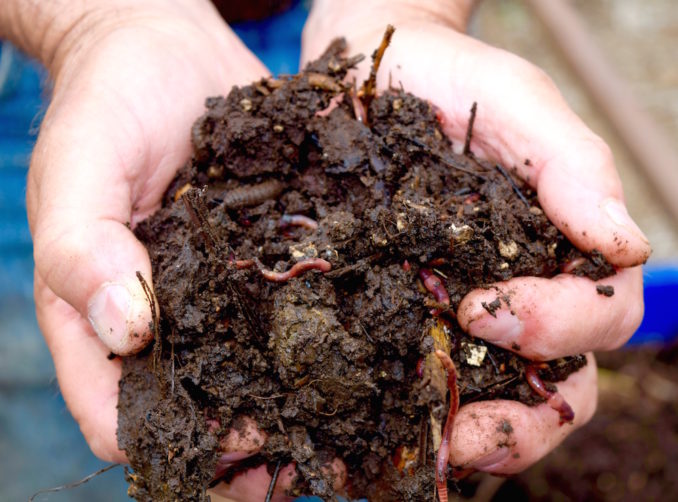

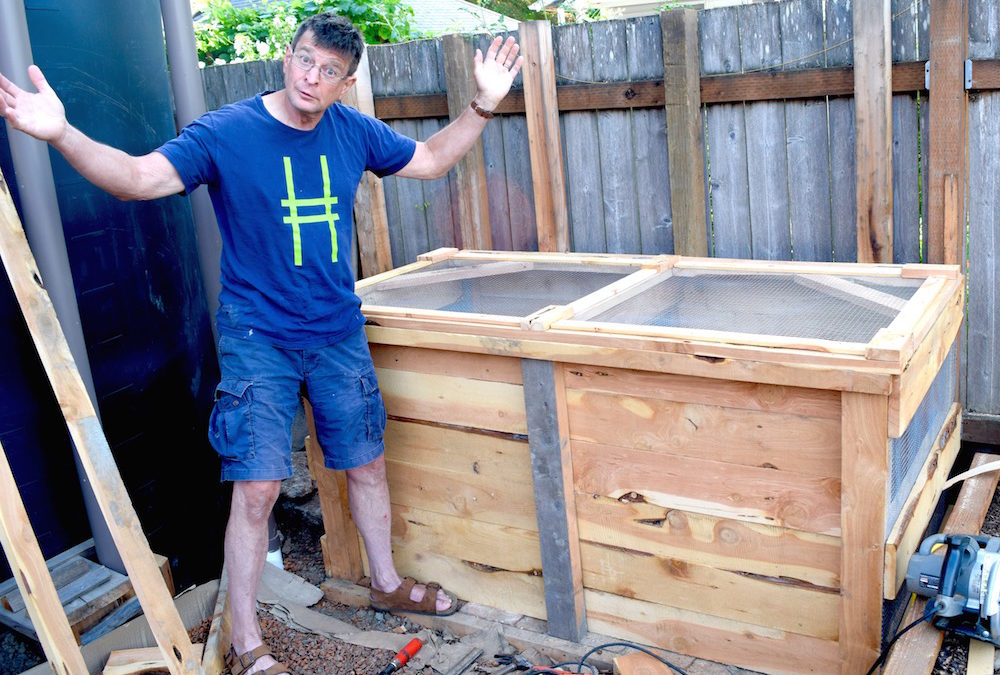
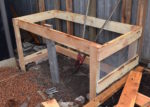
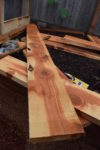
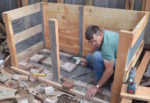






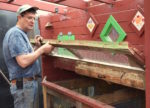
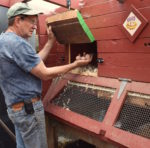
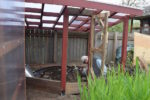
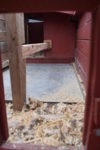

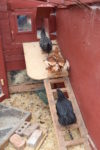

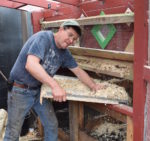
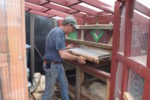


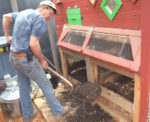
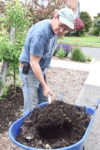


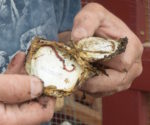


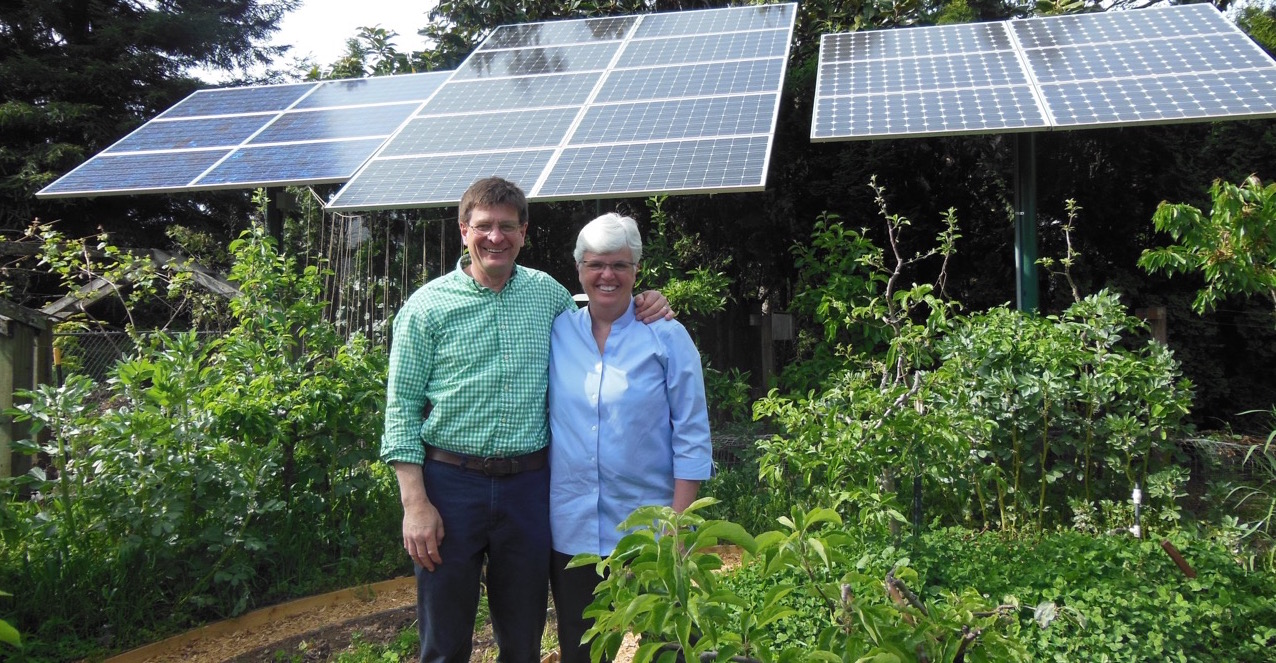


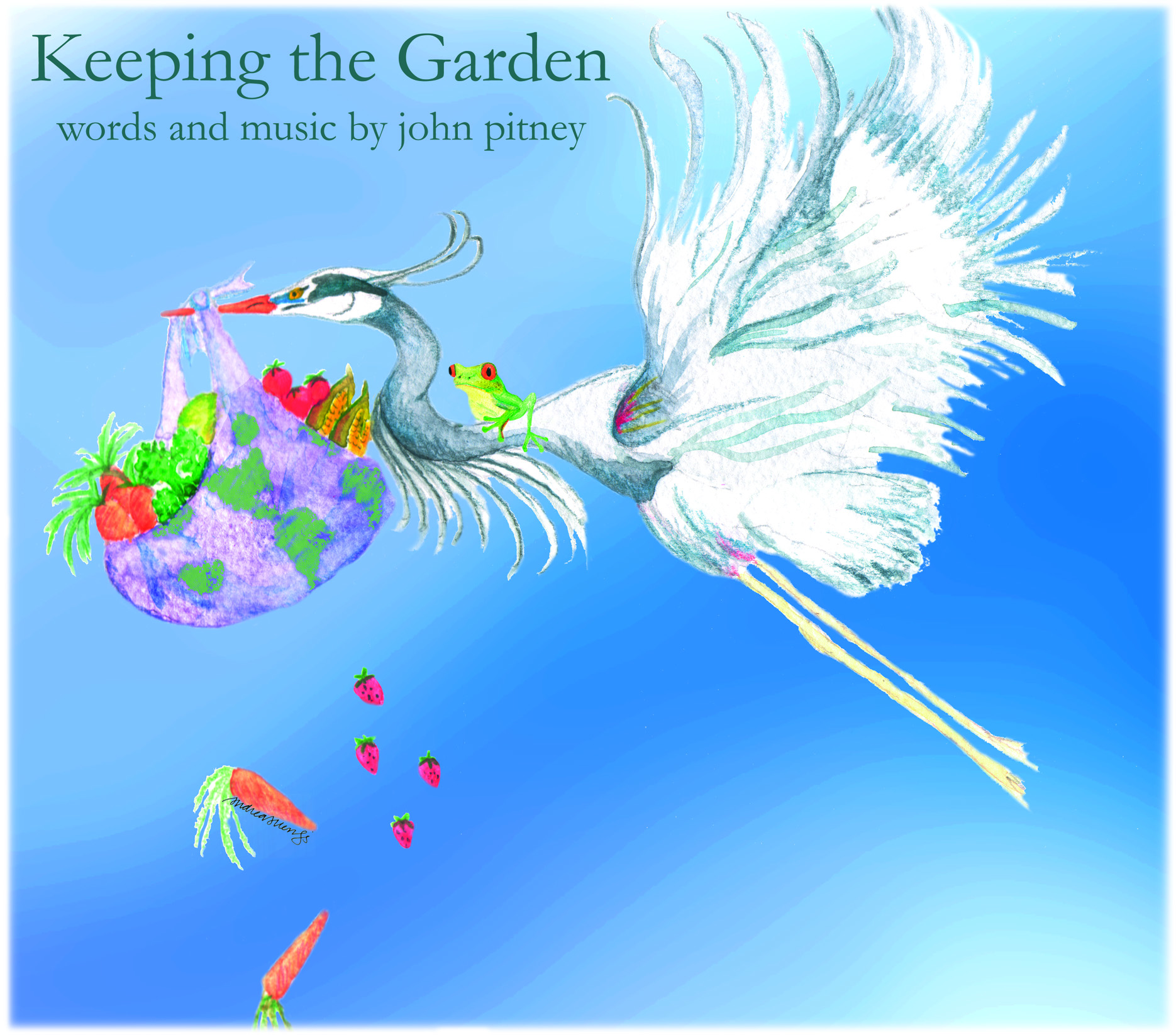
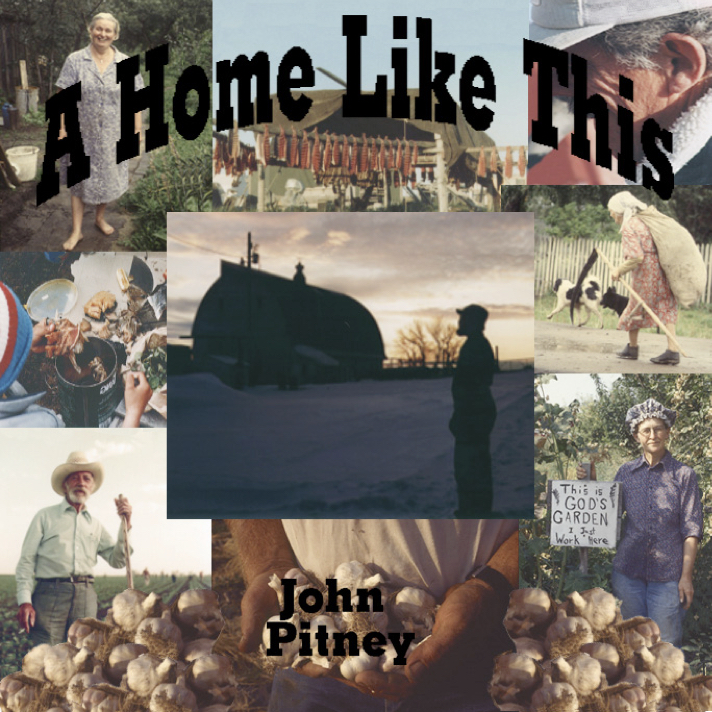
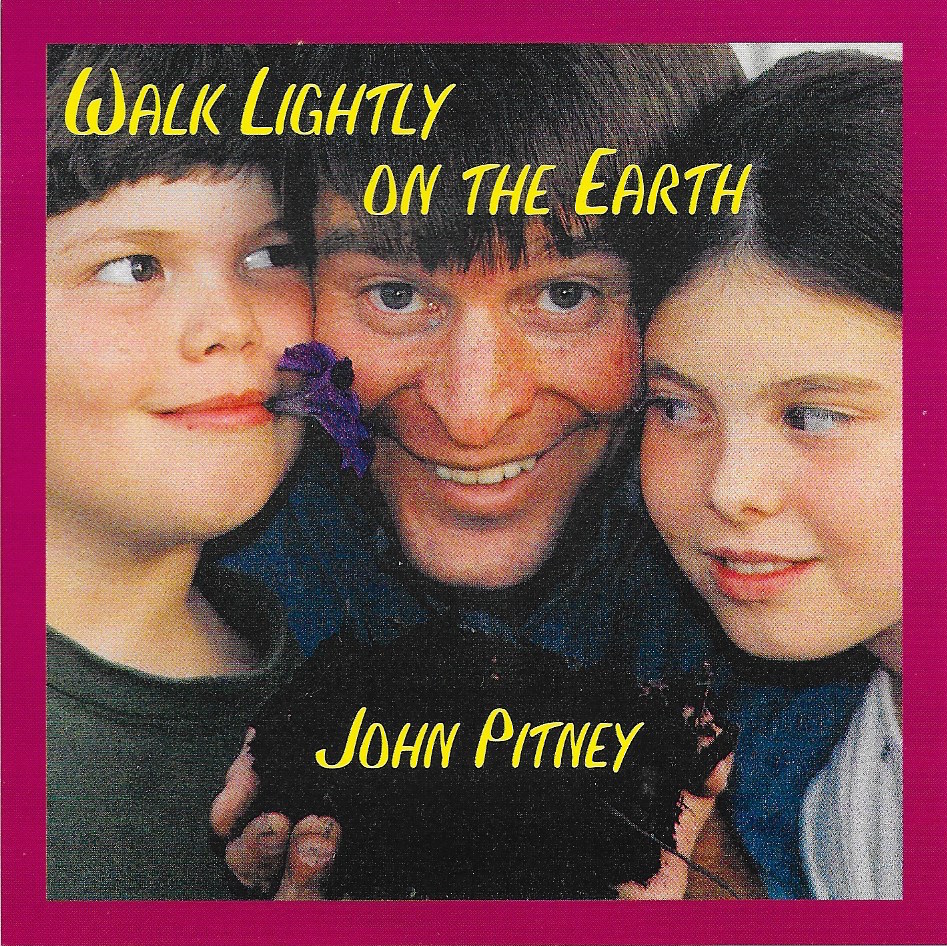

Awesome and absolutely amazing. When the history books are written, our great great grandchildren can say, with great pride, that their grandmothers knew and loved this weird guy!
Ah, we share a love for composting! Are you willing to share how you support your Marionberries? We are moving home to Eugene this week, with our few Marionberry plants that we have moved from place to place. In previous places, they have enjoyed life next to a chainlink fence; I am thinking of running some kind of wire from a post to the wooden fence at the back of the yard to plant the berry plants next to.